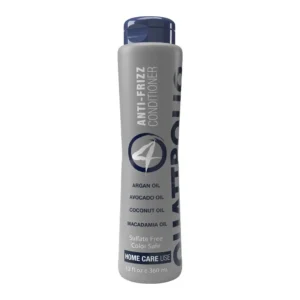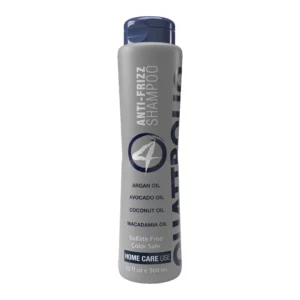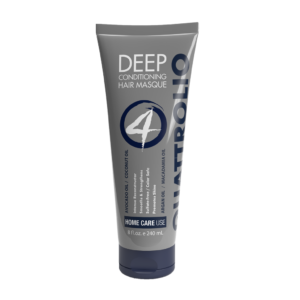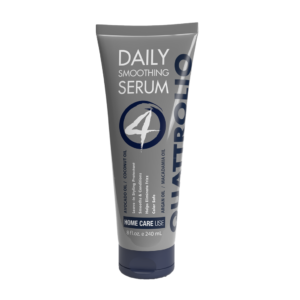Sun protection is a crucial aspect of skincare, especially in regions with high UV exposure like the UAE. Understanding the role of sunscreen, particularly the significance of SPF (Sun Protection Factor), can help you make informed decisions about your skincare routine. This comprehensive guide will delve into the details of SPF, how it works, its importance, and how to effectively use sunscreen to protect your skin.
What Is SPF?
SPF stands for Sun Protection Factor, a measure of how well a sunscreen can protect your skin from UVB rays. UVB rays are responsible for causing sunburn and contribute significantly to skin cancer. SPF does not measure protection against UVA rays, which penetrate deeper into the skin and are associated with aging and long-term skin damage.
The Science Behind SPF
The SPF number indicates how long you can stay in the sun without getting sunburned compared to not using any sunscreen. For instance, if you typically start to burn after 10 minutes in the sun, an SPF 30 sunscreen would theoretically allow you to stay in the sun for 300 minutes without burning (10 minutes x SPF 30). However, this is an estimate and can vary based on factors such as skin type, intensity of sunlight, and the amount of sunscreen applied.
The Importance of UV Protection

UVB Rays
UVB rays are the primary cause of sunburn and play a key role in developing skin cancer. These rays are more intense in the middle of the day and vary in intensity depending on the season and geographical location. Protecting your skin from UVB rays is essential to prevent immediate and long-term damage.
UVA Rays
UVA rays penetrate deeper into the skin than UVB rays and contribute to premature aging and long-term skin damage. Unlike UVB rays, UVA rays are consistently present throughout the day and year. While SPF primarily measures UVB protection, it is crucial to use a broad-spectrum sunscreen that also protects against UVA rays.
How SPF Works

Understanding the Numbers
The SPF rating indicates the level of protection provided against UVB rays. Here’s how different SPF levels compare:
- SPF 15: Blocks 93% of UVB rays.
- SPF 30: Blocks 97% of UVB rays.
- SPF 50: Blocks 98% of UVB rays.
While the difference in protection may seem small, it can significantly impact the amount of UV radiation your skin is exposed to over time. For instance, SPF 30 allows only 3 out of 100 photons to reach your skin, whereas SPF 15 allows 7 out of 100 photons.
Application and Reapplication
For sunscreen to be effective, it must be applied correctly. Experts recommend using about one ounce (a shot glass full) for full-body coverage. Most people apply only 25-50% of the recommended amount, reducing the effectiveness of the sunscreen. Additionally, sunscreen should be reapplied every two hours or immediately after swimming or sweating.
Discover the secrets of SPF and how to choose the best sunscreen for ultimate sun protection. Read more about sunscreen for face in uae now!
The SPF Scale and Its Implications
Non-Linear Scale
The SPF scale is non-linear, meaning that higher SPF numbers do not offer proportionately higher protection. For example:
- SPF 15: Blocks 93% of UVB rays.
- SPF 30: Blocks 97% of UVB rays.
- SPF 50: Blocks 98% of UVB rays.
While SPF 30 offers only 4% more protection than SPF 15, it effectively halves the amount of UV radiation that reaches your skin compared to SPF 15. This highlights the importance of using a higher SPF, especially in regions with intense sun exposure like the UAE.
High SPF Numbers
Sunscreens with very high SPFs (such as SPF 75 or SPF 100) do not offer significantly greater protection than SPF 30 or SPF 50. They can also create a false sense of security, leading people to stay in the sun longer than they should. Additionally, for effective broad-spectrum protection, the UVA protection should be at least one-third of the UVB protection. High SPF sunscreens often have disproportionate UVB protection, potentially leaving skin vulnerable to UVA damage.
Factors Affecting Sunscreen Effectiveness
Skin Type
Different skin types react differently to sun exposure. Fair-skinned individuals are more prone to sunburn and require higher SPF protection compared to those with darker skin. However, all skin types benefit from sunscreen, as UV radiation can cause damage regardless of skin color.
Amount of Sunscreen Applied
The amount of sunscreen applied directly affects its efficacy. Under-applying sunscreen significantly reduces its protective benefits. Using the recommended amount and reapplying it every two hours ensures optimal protection.
Frequency of Reapplication
Sunscreen wears off due to factors like sweating, swimming, and towel drying. Reapplying sunscreen every two hours or after any activity that might remove it is crucial for continuous protection.
Activities and Environment
Activities that involve water or excessive sweating require more frequent reapplication of sunscreen. Water-resistant sunscreens are beneficial for such activities but still need to be reapplied after the specified time (usually 40 or 80 minutes).
Common Misconceptions About SPF
SPF and Duration of Exposure
Many people mistakenly believe that SPF relates to the time they can spend in the sun without burning. However, SPF measures the amount of UVB exposure, not the duration. Factors such as solar intensity, geographical location, and time of day influence UV exposure.
High SPF Equals Complete Protection
No sunscreen can block 100% of UV rays. High SPF sunscreens provide marginally more protection than lower SPFs but can create a false sense of security. It is important to use additional protective measures like wearing hats, sunglasses, and seeking shade.
Broad-Spectrum Sunscreens
Importance of Broad-Spectrum Protection
Broad-spectrum sunscreens protect against both UVA and UVB rays. UVA rays penetrate deeper into the skin and are associated with long-term damage such as premature aging and skin cancer. Using a broad-spectrum sunscreen ensures comprehensive protection.
How to Choose a Broad-Spectrum Sunscreen
Look for sunscreens labeled “broad-spectrum” or “UVA/UVB protection.” These sunscreens have been tested to provide protection against both types of UV rays. Ingredients like zinc oxide and titanium dioxide are effective in providing broad-spectrum protection.
Sunscreen Application Tips
Proper Application Techniques
- Apply Generously: Use at least one ounce (a shot glass full) for full-body coverage.
- Even Coverage: Ensure all exposed areas are covered, including ears, neck, and the tops of feet.
- Reapply Frequently: Reapply every two hours and after swimming, sweating, or towel drying.
Common Application Mistakes
- Under-Applying: Using too little sunscreen reduces its effectiveness.
- Missing Spots: Pay attention to commonly missed areas like the ears, back of the neck, and tops of feet.
- Not Reapplying: Failing to reapply sunscreen reduces its protective benefits over time.
The Role of Sunscreen in Anti-Aging
Preventing Premature Aging
UVA rays penetrate deep into the skin, causing damage to collagen and elastin fibers. This leads to premature aging signs like wrinkles, fine lines, and age spots. Using a broad-spectrum sunscreen helps protect against these effects.
Integrating Sunscreen into Your Skincare Routine
Incorporate sunscreen into your daily skincare routine, regardless of the weather. Apply it after your moisturizer and before your makeup. Many modern sunscreens are formulated to be lightweight and non-greasy, making them suitable for everyday use.
Sunscreen Myths and Facts
Myth: Sunscreen Causes Vitamin D Deficiency
Fact: While sunscreen can reduce the skin’s production of vitamin D, the amount produced through casual sun exposure is typically sufficient. You can also obtain vitamin D through diet and supplements.
Myth: Sunscreen is Only Necessary on Sunny Days
Fact: UV rays can penetrate clouds and cause skin damage even on cloudy days. Wearing sunscreen daily protects your skin from cumulative UV exposure.
Myth: People with Dark Skin Don’t Need Sunscreen
Fact: All skin types can be damaged by UV radiation. While darker skin has more melanin, which offers some protection, it is not immune to sunburn or skin cancer.
Choosing the Right Sunscreen for Your Skin Type
Oily Skin
Look for oil-free, non-comedogenic sunscreens that won’t clog pores. Gel-based or lightweight formulations work well for oily skin.
Dry Skin
Opt for sunscreens with moisturizing ingredients like hyaluronic acid or glycerin. Cream-based sunscreens provide additional hydration.
Sensitive Skin
Choose sunscreens with physical blockers like zinc oxide or titanium dioxide, which are less likely to cause irritation. Avoid fragrances and harsh chemicals.
Acne-Prone Skin
Non-comedogenic, oil-free sunscreens are ideal for acne-prone skin. Gel-based or fluid formulations are lightweight and less likely to trigger breakouts.
Sunscreen and Makeup: How to Layer for Optimal Protection
Applying Sunscreen with Makeup
- Start with Sunscreen: Apply sunscreen as the last step of your skincare routine and before makeup.
- Use a Primer with SPF: For added protection, use a makeup primer that contains SPF.
- Powder Sunscreens: Powder sunscreens can be applied over makeup for touch-ups throughout the day.
Choosing Makeup with SPF
Many foundations, BB creams, and powders now come with added SPF. While these products can provide additional protection, they should not replace a dedicated sunscreen.
Sunscreen for Children: What Parents Need to Know
Choosing Sunscreen for Kids
- Broad-Spectrum Protection: Ensure the sunscreen protects against both UVA and UVB rays.
- Physical Blockers: Sunscreens with zinc oxide or titanium dioxide are gentle on children’s skin.
- Water-Resistant: Choose water-resistant formulas for outdoor activities.
Tips for Applying Sunscreen to Children
- Apply Generously: Use enough sunscreen to cover all exposed skin.
- Reapply Frequently: Reapply every two hours and after swimming or sweating.
- Lead by Example: Encourage children to develop good sun protection habits by applying sunscreen together.
Eco-Friendly Sunscreens: Protecting Your Skin and the Environment
Understanding the Impact
Some sunscreen ingredients, such as oxybenzone and octinoxate, can harm marine life and coral reefs. Eco-friendly sunscreens use safer ingredients and packaging.
Choosing Eco-Friendly Sunscreens
Look for sunscreens labeled “reef-safe” or “biodegradable.” Ingredients like non-nano zinc oxide and titanium dioxide are environmentally friendly.
The Future of Sunscreen Technology
Advances in Formulations
New sunscreen formulations focus on improving texture, reducing white cast, and enhancing broad-spectrum protection. Innovations include water-based gels, sprays, and powders.
Wearable Sun Protection
Technology is being integrated into clothing and accessories to provide additional sun protection. UV-blocking fabrics and smart wearables that monitor UV exposure are becoming more common.
Conclusion
Understanding SPF and the importance of sunscreen is crucial for maintaining healthy skin, especially in sun-intense regions like the UAE. By choosing the right sunscreen, applying it correctly, and reapplying frequently, you can protect your skin from the harmful effects of UV radiation. Incorporate sunscreen into your daily routine and educate yourself about the latest advancements to ensure comprehensive sun protection. Remember, sunscreen is just one part of a holistic approach to sun safety that includes seeking shade, wearing protective clothing, and staying informed about the latest in sun protection technology.





